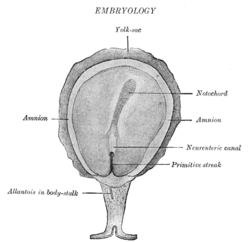| 5-HT1 | | 5-HT1A | - 고민자: 8-OH-DPAT
- 아다탄세린
- 암페타민
- 항우울제(예: 에토페리돈, 히드록시네파조돈, 네파조돈, 트라조돈, 트라이아졸레디온, 빌라조돈, 보르티오네틴)
- 비정형 항정신병 약물(예: 아리피프라졸, 아세나핀, 브렉스피프라졸, 카리프라진, 클로자핀, 루라시돈, 퀘티아핀, 지프라시돈)
- 아자피로네(예: 부스피론, 엡타피론, 게피론, 페로스피론, 탠도스피론)
- 만 R 1531
- 베피라돌
- BMY-14802
- 칸나비디올
- 디메메브페
- 도파민
- 에발조탄
- 엘토프라진
- 인크리프라진
- 에르고린(예: 브로모크립틴, 카베르골린, 디히드로에르고타민, 에르고타민, 리수라이드, LSD, 메틸에르고메트린(메틸에르고노바인), 메티세게티드, 페르골라이드)
- F-11461
- F-12826
- F-13714
- F-14679
- F-15063
- F-15,599
- 플레시녹산
- 플리반세린
- 플루멕사돌
- 하이피돈
- 레소피트론
- LY-293284
- LY-301317
- mCPP
- MKC-242
- 날루조탄
- NBUMP
- 오세모조탄
- 옥사플로잔
- 파도프루녹스
- 피클로조탄
- 라우월신
- 레피노탄
- 록신돌
- RU-24,969
- S-14,506
- S-14671
- S-15535
- 사리조탄
- 세로토닌(5-HT)
- SSR-181507
- 수네피트론
- 트립타민(예: 5-CT, 5-MeO-DMT, 5-MT, 부포테닌, DMT, 인도렌산, N-Me-5-HT, 실로신, 실로시빈)
- TGBA01AD
- U-92,016-A
- 우라피딜
- 빌라조돈
- 샬리프로덴
- 요힘빈
| - 적대자: 비정형 항정신병 약물(예: 일오페리돈, 리스페리돈, 세르틴돌)
- AV965
- 베타 차단제(예: 알프레놀, 카르테올, 시아노핀돌, 요오드야노핀돌, 이사몰탄, 옥스프레놀, 펜부톨, 핀도빈드, 핀돌, 프로프라놀롤, 테르타톨올)
- BMY-7,378
- CSP-2503
- 도타리진
- 에르고린(예: 메테르골린)
- FCE-24379
- 플로프로피온느
- GR-46611
- 이사몰타인
- 레코조탄
- 메프웨이
- 메티테핀(메티티오테핀)
- MIN-117(WF-516)
- MPPF
- NAN-190
- 로발조탄
- S-15535
- SB-649,915
- SDZ 216-525
- 스피페론
- 스피라마이드
- 스피록사트린
- UH-301
- WAY-100135
- WAY-100635
- 샤일라미딘
| |
|
|---|
| 5-HT1B | - 고민자: 안피톨린
- CGS-12066a
- CP-93129
- CP-94253
- CP-122,288
- CP-135807
- 엘토프라진
- 에르골린(예: 브로모크립틴, 디히드로에르고타민, 에르고타민, 메틸에르고메트린(메틸에르고노빈), 메티세르게이드, 페르골리드)
- mCPP
- RU-24,969
- 세로토닌(5-HT)
- 삼단(예: Avitriptan, Donitriptan, Electriptan, sumatriptan, zolmitriptan)
- TFMPP
- 트립타민(예: 5-BT, 5-CT, 5-MT, DMT)
- 보르티오크세틴
| | |
|
|---|
| 5-HT1D | - 고민자: CP-122,288
- CP-135807
- CP-286601
- 에르골린(예: 브로모크립틴, 카베르골린, 디히드로에르고타민, 에르고타민, LSD, 메티세르게이드)
- GR-46611
- L-694247
- L-772405
- mCPP
- PNU-109291
- PNU-142633
- 세로토닌(5-HT)
- TGBA01AD
- 트립탄(예: 알모트립탄, 아비크립탄, 도니크립탄, 엘렉트립탄, 프로바크립탄, 나라트립탄, 리자트립탄, 수마트립탄, 졸미트립탄)
- 트립타민(예: 5-BT, 5-CT, 5-Et-DMT, 5-MT, 5-(노닐록시) 트립타민, DMT)
| | |
|
|---|
| 5-HT1E | |
|---|
| 5-HT1F | |
|---|
|
|---|
| 5-HT2 | | 5-HT2A | - Agonists: 25H/NB series (e.g., 25I-NBF, 25I-NBMD, 25I-NBOH, 25I-NBOMe, 25B-NBOMe, 25C-NBOMe, 25TFM-NBOMe, 2CBCB-NBOMe, 25CN-NBOH, 2CBFly-NBOMe)
- 2C(예: 2C-B, 2C-E, 2C-I, 2C-T-2, 2C-T-7, 2C-T-21)
- 2C-B-Fly
- 2CB-인드
- 5-메톡시트리프타민(5-MeO-DET, 5-MeO-DipT, 5-MeO-DMT, 5-MeO-DPT, 5-MT)
- α-알킬트리프타민(예: 5-Cl-αMT, 5-Fl-αMT, 5-MeO-αET, 5-MeO-αMT, α-Me-5-HT, αET, αMT)
- AL-34662
- AL-37350a
- 브로모드래곤플라이
- 디메메브페
- DMBMPP
- DOx(예: DOB, DOC, DOI, DOM)
- 에파비렌츠
- Ergolines (e.g., 1P-LSD, ALD-52, bromocriptine, cabergoline, ergine (LSA), ergometrine (ergonovine), ergotamine, lisuride, LA-SS-Az, LSB, LSD, LSD-Pip, LSH, LSP, methylergometrine (methylergonovine), pergolide)
- 플루멕사돌
- 짐살린
- 로커세린
- MDxx(예: MDA(테남페타민), MDMA(미도마페타민), MDH, MMDA)
- O-4310
- 옥사플로잔
- PHA-57378
- PNU-22394
- PNU-181731
- RH-34
- 페네틸아민(예: 로포핀, 메스칼린)
- 피페라진(예: BZP, Quipazine, TFMPP)
- 세로토닌(5-HT)
- TCB-2
- TFMFLY
- 트립타민(예: 5-BT, 5-CT, 부포테닌, DET, DIPT, DMT, DPT, 실로신, 실로시빈, 트립타민)
| - 적대자: 5-I-R91150
- 5-MeO-NBPBRt
- AC-90179
- 아다탄세린
- 알탄세린
- 항히스타민(예: 시프로헵타딘, 히드록시진, 케토티펜, 펄라핀)
- 암다
- Atypical antipsychotics (e.g., amperozide, aripiprazole, asenapine, blonanserin, brexpiprazole, carpipramine, clocapramine, clorotepine, clozapine, fluperlapine, gevotroline, iloperidone, lurasidone, melperone, mosapramine, ocaperidone, olanzapine, paliperidone, quetiapine, risperidone, sertindole, zicronapine, ziprasidone, zotepine)
- 클로로프룩센
- 시난세린
- CSP-2503
- 데람시클레인
- 도타리진
- 에플리반세린
- 에르고린(예: 아메세르기드, LY-53857, LY-215,840, 메술레진, 메테르골린, 메티세르기드, 세르골렉스올레)
- 파난세린
- 플리반세린
- 글레만세린
- 이린달린
- 케탄세린
- KML-010
- 란디피르딘
- LY-393558
- mCPP
- 메디톡사민
- 메티테핀(메티티오테핀)
- MIN-117(WF-516)
- 나프티드로푸릴
- 난테닌
- 넬로탄세린
- 오피란세린(VVZ-149)
- 펠란세린
- 페녹시벤츠아민
- 피마반세린
- 피렌페론
- 피조티펜
- 프루반세린
- 라우월신
- 리탄세린
- 롤루페리돈
- S-14671
- 사포그렐라목
- 세로토닌 길항제 및 재흡수 억제제(예: 에토페리돈, 히드록시네파조돈, 루바조돈, 메피프라졸, 네파조돈, 트리아졸레디온, 트라조돈)
- SR-46349b
- TGBA01AD
- 테닐록사진
- 테마노그렐
- 4회성 항우울제(예: 아목사핀, 압타자핀, 에스미르타자핀, 마프로틸린, 미안세린, 미아르자핀)
- 삼주기 항우울제(예: 아미트리피라인)
- 대표적인 항정신병 약물(예: 클로로프롬아진, 플루페나진, 할로페리돌, 록사핀, 페페나진, 피모자이드, 피팜페론, 프로클로로페라진, 세토페론, 스피리페론, 티오리다진, 티오르티신, 트라이플루오페라진)
- 볼리난세린
- 샤일라미딘
- 요힘빈
| |
|
|---|
| 5-HT2B | - 고민자: 4-메틸라미노렉스
- 아미노렉스
- 암페타민(예: 클로로펜테민, 클로포렉스, 덱스펜플루라민, 펜플루라민, 레보펜플루라민, 노르펜플루라민)
- BW-723C86
- DOx(예: DOB, DOC, DOI, DOM)
- 에르골린(예: 카베르골린, 디히드로에르고크립틴, 디히드로에고타민, 에르고타민, 메틸에르고메트린(메틸에르고노빈), 메티세르게이드, 페르골리드)
- 로커세린
- MDxx(예: MDA(테남페타민), MDMA(미도마페타민), MDH, MMDA)
- 피페라진(예: TFMPP)
- PNU-22394
- 로60-0175번길
- 세로토닌(5-HT)
- 트립타민(예: 5-BT, 5-CT, 5-MT, α-Me-5-HT, 부포테닌, DET, DIPT, DPT, 실로신, 프릴로시빈, 트립타민)
| - 적대자: 아고멜라틴
- Atypical antipsychotics (e.g., amisulpride, aripiprazole, asenapine, brexpiprazole, cariprazine, clozapine, N-desalkylquetiapine (norquetiapine), N-desmethylclozapine (norclozapine), olanzapine, pipamperone, quetiapine, risperidone, ziprasidone)
- 키프로헵타딘
- 이지스-7625
- 에르고린(예: 아메세르기드, 브로모크립틴, 리수라이드, LY-53857, LY-272015, 메술러긴)
- 케탄세린
- LY-393558
- mCPP
- 메타독신
- 메티테핀(메티티오테핀)
- 피렌페론
- 피조티펜
- 프로프라놀놀
- PRX-08066
- 라우월신
- 리탄세린
- RS-127445
- 사포그렐라목
- SB-200646
- SB-204741
- SB-206553
- SB-215505
- SB-221284
- SB-228357
- SDZ SER-082
- 테가세로드
- 4회성 항우울제(예: 아목사핀, 미안세린, 미르타자핀)
- 트라조돈
- 대표적인 항정신병 약물(예: 클로로프롬아진)
- TIK-301
- 요힘빈
| |
|
|---|
| 5-HT2C | - 작용제: 2C(예: 2C-B, 2C-E, 2C-I, 2C-T-2, 2C-T-7, 2C-T-21)
- 5-메톡시트리프타민(5-MeO-DET, 5-MeO-DipT, 5-MeO-DMT, 5-MeO-DPT, 5-MT)
- α-알킬트리프타민(예: 5-Cl-αMT, 5-Fl-αMT, 5-MeO-αET, 5-MeO-αMT, α-Me-5-HT, αET, αMT)
- A-372159
- AL-38022a
- 알스토닌
- CP-809101
- 디메메브페
- DOx(예: DOB, DOC, DOI, DOM)
- 에르고린(예: ALD-52, 카베르골린, 디히드로에르고타민, 에르진(LSA), 에르고타민, 리수라이드, LA-SS-Az, LSB, LSD, LSD, LSD-Pip, LSH, LSP, 페르골라이드)
- 플루멕사돌
- 로커세린
- MDxx(예: MDA(테남페타민), MDMA(미도마페타민), MDH, MMDA)
- MK-212
- OR-12962
- ORG-37684
- 옥사플로잔
- PHA-57378
- 페네틸아민(예: 로포핀, 메스칼린)
- Piperazine(예: 아리피프라졸, BZP, mCPP, Quipazine, TFMPP)
- PNU-22394
- PNU-181731
- 로60-0175번길
- 로60-0213번길
- 세로토닌(5-HT)
- 트립타민(예: 5-BT, 5-CT, 부포테닌, DET, DIPT, DMT, DPT, 실로신, 실로시빈, 트립타민)
- 바비카세린
- WAY-629
- WAY-161503
- YM-348
| - 적대자: 아다탄세린
- 아고멜라틴
- 비정형 항정신병 약물(예: 아세나핀, 클로로테핀, 클로자핀, 플루퍼라핀, 일로페리돈, 멜페론, 올란자핀, 팔레페리돈, 퀘티아핀, 리스페리돈, 세르틴돌레, 지프라시돈, 조테핀)
- 캡토다이메
- CEPC
- 시난세린
- 키프로헵타딘
- 데람시클레인
- 데스메트라마돌
- 도타리진
- 엘토프라진
- 에르골린(예: 아메세르기드, 브로모크립틴, LY-53857, LY-215,840, 메술레진, 메테르골린, 메티세르기드, 세르골렉스올)
- 에토페리돈
- 플루옥세틴
- FR-260010
- 이린달린
- 케탄세린
- 케토티펜
- 라트레피르딘(다이메볼린)
- 메디톡사민
- 메티테핀(메티티오테핀)
- 네파조돈
- 피렌페론
- 피조티펜
- 프로프라놀놀
- 리탄세린
- RS-10221
- S-14671
- SB-200646
- SB-206553
- SB-221284
- SB-228357
- SB-242084
- SB-243213
- SDZ SER-082
- 테다티오엑세틴
- 4회성 항우울제(예: 아목사핀, 압타자핀, 에스미르타자핀, 마프로틸린, 미안세린, 미아르자핀)
- TIK-301
- 트라마돌
- 트라조돈
- 삼주기 항우울제(예: 아미트리피라인, 북위선)
- 대표적인 항정신병 약물(예: 클로로프롬아진, 록사핀, 피모자이드, 피팜페론, 티오리다진)
- 샤일라미딘
| |
|
|---|
|
|---|
| 5-HT3–7 | | 5-HT3 | |
|---|
| 5-HT4 | |
|---|
| 5-HT5A | |
|---|
| 5-HT6 | - 고민자: 에르고린(예: 디히드로에르고크립틴, 디히드로에고타민, 에르고타민, 리수라이드, LSD, 메술레긴, 메틸렌, 메티세르기드)
- 하이피돈
- 세로토닌(5-HT)
- 트립타민(예: 2-Me-5-HT, 5-BT, 5-CT, 5-MT, Bufotenin, E-6801, E-6837, EMD-386088, EMDT, LY-586713, N-Me-5-HT, ST-1936, 트립타민)
- WAY-181187
- WAY-208466
| - 적대자: ABT-354
- 비정형 항정신병 약물(예: 아리피프라졸, 아세나핀, 클로로테핀, 클로자핀, 플루퍼라핀, 일로페리돈, 올란자핀, 티오스피론)
- AVN-101
- AVN-211
- AVN-322
- AVN-397
- BGC20-760
- BVT-5182
- BVT-74316
- 세라피르딘
- 이지스-12,233
- GW-742457
- 이달로피르딘
- 케탄세린
- 란디피르딘
- 라트레피르딘(다이메볼린)
- 마스피르딘
- 메티테핀(메티티오테핀)
- MS-245
- PRX-07034
- 리탄세린
- 로04-6790번길
- 로63-0563번길
- SB-258585
- SB-271046
- SB-357134
- SB-399885
- SB-742457
- 4회성 항우울제(예: 아목사핀, 미안세린)
- 트리사이클릭 항우울제(예: 아미크립티라인, 클로미프라민, 독세핀, 노르트립티라인)
- 대표적인 항정신병 약물(예: 클로로프롬아진, 록사핀)
| |
|
|---|
| 5-HT7 | | - 적대자: 비정형 항정신병 약물(예: 아미술프라이드, 아리피프라졸, 아세나핀, 브렉스피프라졸, 클로자핀, 플루퍼라핀, 올란자핀, 리스페리돈, 세르틴돌, 티아스피론, 지프라시돈, 조테핀)
- 부타클라몰
- DR-4485
- 이지스-12,233
- 에르골린(예: 2-Br-LSD(BOL-148)), 아메세르기드, 브로모크립틴, 카베르골린, 디히드로에르고타민, 에르고타민, LY-53857, LY-215,840, 메술레진, 메스울레르기드, 세르골레솔레)
- JNJ-18038683
- 케탄세린
- LY-215,840
- 메티테핀(메티티오테핀)
- 리탄세린
- SB-258719
- SB-258741
- SB-26970
- SB-656104
- SB-656104a
- SB-691673
- SLV-313
- SLV-314
- 스피페론
- SSR-181507
- 4차 순환 항우울제(예: amoxapine, maprotiline, mianserin, mirtazapine)
- 트리사이클릭 항우울제(예: 아미트리피라인, 클로미프라민, 이미프라민)
- 대표적인 항정신병 약물(예: 아세토페나진, 클로로프롬아진, 클로로프락신, 플루페나진, 록사핀, 피모자이드)
- 보르티오크세틴
| |
|
|---|
|
|---|




